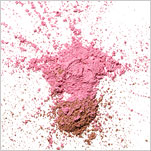
POOF An expanding halo of light from an explosion four years ago illuminates shells of dust around the star V838. The red giant star is in the middle of the image.
Readers’ Opinions
Is this a picture of a star that just swallowed its own planets? Talk about bad mothers.
That's what astronomers have been arguing about for the last three years, ever since Alon Retter and Ariel Marom, then of the University of Sydney in Australia, proposed infanticide as the explanation for a spectacular and unusual outburst in the constellation Monocerotis, just east of Orion in the sky. In January 2002, a star there by the typically ungainly name of V838 Monocerotis erupted, brightening to become 600,000 times as luminous as the Sun and swelling to a billion miles across, about the orbit of Jupiter, to become one of the most luminous stars in the galaxy, as well as one of the coolest.
The pulse of light traveling outward from the explosion has illuminated shells of dust previously kicked off the star, visible as a movie here.
Dr. Retter's and Dr. Marom's measurements of the star's light output showed that the explosion happened in three stages, reaching a peak in brightness and then declining three times from January to March 2002.
That, they said, could be the signature of three Jupiter-size planets going to their doom. As the star began to puff up at the end of its life into a so-called red giant, the story goes, it enveloped its progeny, each of which then dropped deep into the star with a boom, increasing the expansion.
But other astronomers have questioned whether the planets would fall far or fast enough to produce the required energy. Noam Soker of the Technion-Israel Institute of Technology and Romuald Tylenda of the Copernicus Astronomical Center in Torun, Poland, argued that a small star falling in would be required to produce the observed energy. Other theories include the merger of two stars, a thermonuclear convulsion on the dense core of a red giant, and the most popular — none of the above.
Last month, Dr. Retter, of Pennsylvania State University, reported new calculations by himself and three colleagues, in the Monthly Notices of the Royal Astronomical Society that he said bolstered their controversial notion and a new variant, in which the outburst could have been fueled by one giant planet falling in three stages, like a basketball bouncing down the stairs.
"Personally, I like the three-planets scenario," Dr. Retter wrote in an e-mail message, "but there a few advantages for the single planet model." Howard E. Bond of the Space Telescope Science Institute, who has taken movies of the Monocerotis eruption with the Hubble Space Telescope, said no theory of the explosion was convincing yet.
"I believe it to be one of the major unsolved problems in stellar astrophysics," Dr. Bond said.
The answer could be relevant to our own plight. Someday a few billion years from now, the Sun will run out of fuel and also become a red giant, swallowing Mercury and frying the Earth and Venus.











